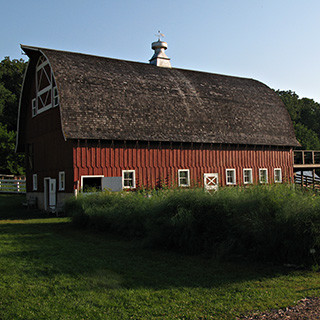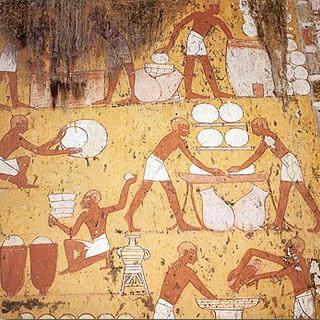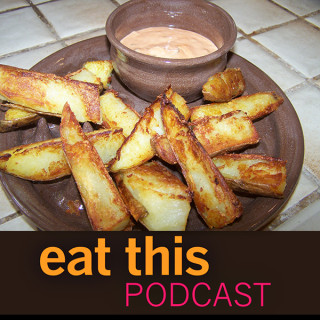 When you’re on holiday, or just away from home, do you seek out the “authentic” local food, or look for a reassuringly familar logo? Backpackers, keen to distinguish themselves from the vulgar hordes who are merely on holiday, seek out the authentic, at least to begin with. Dr Emily Falconer has been studying women backpackers. That’s her in the photo, doing a little field research over a bowl of something exotic in Thailand. And she says that while they start out seeking the grottiest places to eat, after they’ve been on the road for a while, their thoughts stray guiltily to familiar, comforting foods. I know the feeling
When you’re on holiday, or just away from home, do you seek out the “authentic” local food, or look for a reassuringly familar logo? Backpackers, keen to distinguish themselves from the vulgar hordes who are merely on holiday, seek out the authentic, at least to begin with. Dr Emily Falconer has been studying women backpackers. That’s her in the photo, doing a little field research over a bowl of something exotic in Thailand. And she says that while they start out seeking the grottiest places to eat, after they’ve been on the road for a while, their thoughts stray guiltily to familiar, comforting foods. I know the feeling
Podcast: Play in new window | Download (Duration: 16:48 — 15.8MB)
Subscribe: Google Podcasts | Spotify | Android | RSS | More
 Emily Falconer didn’t set out to study backpackers and food, but soon discovered that no matter what the subject, the people she was talking to sooner or later brought up food. I’m no exception, and although I’ve never been a great backpacker myself, I do prefer to seek out reasonably local eating places where I can, and I’ve had some memorable meals as a result. The most memorable of those was in Kunming, China, where I detached myself from the group I was with and went in search of something to eat. I didn’t find it at the food fair that was on at the same time, but in the end I fetched up in a place so authentic it didn’t even have photographs of the food. I indicated to the waiter that I was hungry and he brought me food. I had no idea what any of it was, and aside from one soupy dish that was almost too hot even for me, it was all delicious. Next time I might take with me a book, this book.
Emily Falconer didn’t set out to study backpackers and food, but soon discovered that no matter what the subject, the people she was talking to sooner or later brought up food. I’m no exception, and although I’ve never been a great backpacker myself, I do prefer to seek out reasonably local eating places where I can, and I’ve had some memorable meals as a result. The most memorable of those was in Kunming, China, where I detached myself from the group I was with and went in search of something to eat. I didn’t find it at the food fair that was on at the same time, but in the end I fetched up in a place so authentic it didn’t even have photographs of the food. I indicated to the waiter that I was hungry and he brought me food. I had no idea what any of it was, and aside from one soupy dish that was almost too hot even for me, it was all delicious. Next time I might take with me a book, this book.
Notes
- Emily Falconer is a senior research assistant at the Weeks Centre for Social and Policy Research at London South Bank University.
- Her paper is Transformations of the backpacking food tourist: Emotions and conflicts.
- She also mentioned Food in tourism: Attraction and Impediment, by Erik Cohen and Nir Avieli.
- Intro music, as ever, by Dan-O at DanoSongs.com.
- While Jimmy Buffet – and how appropriate is that? – provided the outro music.

 What, really, is the point of conserving agricultural biodiversity? The formal sector, genebanks and the like, will say it is about genetic resources and having on hand the traits to breed varieties that will solve the challenges tomorrow might throw up. Thousands of seed savers around the world might well agree with that, at least partially. I suspect, though, that for most seed savers the primary reason is surely more about food, about having the varieties they want to eat. David Cavagnaro has always championed that view. David’s is a fascinating personal history, which currently sees him working on the
What, really, is the point of conserving agricultural biodiversity? The formal sector, genebanks and the like, will say it is about genetic resources and having on hand the traits to breed varieties that will solve the challenges tomorrow might throw up. Thousands of seed savers around the world might well agree with that, at least partially. I suspect, though, that for most seed savers the primary reason is surely more about food, about having the varieties they want to eat. David Cavagnaro has always championed that view. David’s is a fascinating personal history, which currently sees him working on the  Say you wanted to bake bread in a microwave – I can’t think why, but say you did – you could go online and search the internets for a recipe. And you would come up with a few. Just reading them over, they didn’t seem all that appetising. One, for example, warned that you had to serve the bread toasted. What’s the point of that? Anyway, that didn’t deter Ken Albala, a professor at the University of the Pacific in Stockton, California, but rather than search the internet, he turned to ancient Egypt for inspiration. In thinking about ways in which the material culture of food might change in the future, for the Oxford Symposium on Food and Cookery, he came up with not only
Say you wanted to bake bread in a microwave – I can’t think why, but say you did – you could go online and search the internets for a recipe. And you would come up with a few. Just reading them over, they didn’t seem all that appetising. One, for example, warned that you had to serve the bread toasted. What’s the point of that? Anyway, that didn’t deter Ken Albala, a professor at the University of the Pacific in Stockton, California, but rather than search the internet, he turned to ancient Egypt for inspiration. In thinking about ways in which the material culture of food might change in the future, for the Oxford Symposium on Food and Cookery, he came up with not only  I am reliably informed that the taste of a soggy potato crisp – or chip, if you prefer – is identical to that of a crispy one. But the experience falls far short of enjoyable. A crisp needs to be, well, crisp. If it isn’t, it actually tastes bad. That’s not quite so true of things like fried or oven-roasted potato chips; they still taste pretty good when they’re not quite so crispy, but they’re even better when they are crispy, and that goes for a whole lot of other cooked crispy things too. Which is why it is such a shame that by the time you get to the bottom of a plateful of fries or nachos, they’re soggy. Not to mention thin-crust pizza in a box. Ken Albala, a food historian at the University of the Pacific in Stockton California, happens to be an accomplished ceramicist, so he invented a plate that helps keep foods crispy. And that prompted an episode on crispy crunchiness.
I am reliably informed that the taste of a soggy potato crisp – or chip, if you prefer – is identical to that of a crispy one. But the experience falls far short of enjoyable. A crisp needs to be, well, crisp. If it isn’t, it actually tastes bad. That’s not quite so true of things like fried or oven-roasted potato chips; they still taste pretty good when they’re not quite so crispy, but they’re even better when they are crispy, and that goes for a whole lot of other cooked crispy things too. Which is why it is such a shame that by the time you get to the bottom of a plateful of fries or nachos, they’re soggy. Not to mention thin-crust pizza in a box. Ken Albala, a food historian at the University of the Pacific in Stockton California, happens to be an accomplished ceramicist, so he invented a plate that helps keep foods crispy. And that prompted an episode on crispy crunchiness.